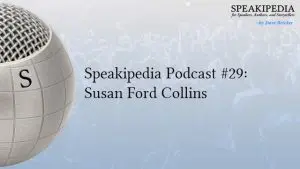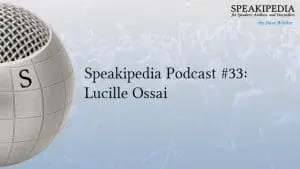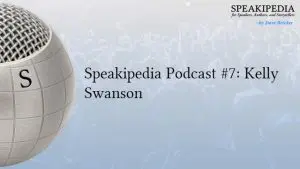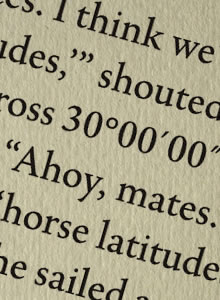 Writers often ask about the difference between “straight” or “dumb” quotation marks and traditional printers’ quotes, commonly referred to as “smart quotes” or “curly quotes.” Add in the need to distinguish between left single quotes and apostrophes, and the primes used to specify feet and inches or minutes and seconds and you end up with a typographic conundrum that confounds many a capable author. This article examines the various types of quotes and primes and explains how to use them.
Writers often ask about the difference between “straight” or “dumb” quotation marks and traditional printers’ quotes, commonly referred to as “smart quotes” or “curly quotes.” Add in the need to distinguish between left single quotes and apostrophes, and the primes used to specify feet and inches or minutes and seconds and you end up with a typographic conundrum that confounds many a capable author. This article examines the various types of quotes and primes and explains how to use them.
Book Design Basics: Straight or Dumb Quotes
Straight quotes evolved to facilitate informal writing situations. When typing into a discussion forum, twitter feed, or comment box, use your apostrophe and double-quote keys for all the special characters (except the “degrees” symbol.) “Dumb” text editors don’t try to figure out which direction to slant your punctuation. “Dumb” writers don’t have to go to the “insert special characters” dialog box or remember special key sequences for each type of mark.
Consider the various punctuation styles needed to render the following example:

Straight quotes make it quick and easy to express a thought. You don’t have to be a typographer to make yourself understood. In the right situations, “dumb quotes” are a smart idea.
Book Design Basics: Smart Quotes Aren’t So Smart
Smart software tries to figure out what punctuation should be used based on context. A quotation mark that follows a space is probably an open quotation mark. A quotation mark that follows a period (at least in North America) is usually a closing quote. A single quote in the middle of a word is most likely an apostrophe. Smart quotes work most of the time, but they don’t fare too well with my example sentence.

The primes used to express latitude have transformed into single quotes, and the apostrophe in ’98 has become a single quote that faces the wrong direction. Writing on “autopilot” won’t cut it for every circumstance. Writers and editors must learn enough about typography to express themselves correctly. Here’s the desired result:

And this is one more reason a typesetter must go through the book block line-by-line, paragraph-by-paragraph: It’s the only way to find and repair typographic inaccuracies that can make a book appear amateur and unprofessional.
Book Design Basics: Typing Quotes and Primes
To make things easier, most word processors and typesetting programs have a “Special Characters” palette. Find the character you want and click to insert—easy. Otherwise, quotation marks and primes have “escape sequences” that allow you to insert them from your keyboard.
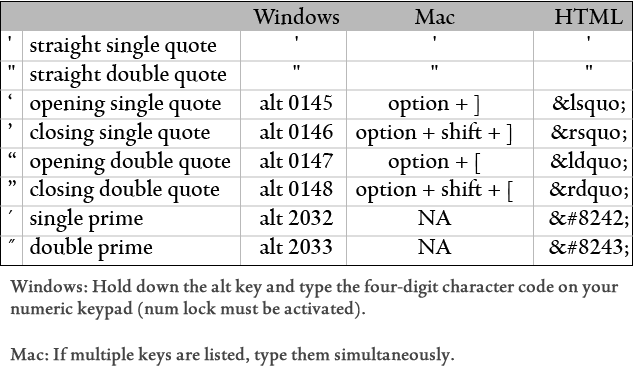 Book Design Basics: Turning Smart Quotes On and Off
Book Design Basics: Turning Smart Quotes On and Off
The Preferences dialog in MS Word enables you toggle “smart quotes” and other features on and off. Take a look at these settings and decide which ones you want to use or you’ll tear your hair out trying to figure out why Word keeps changing everything you type.
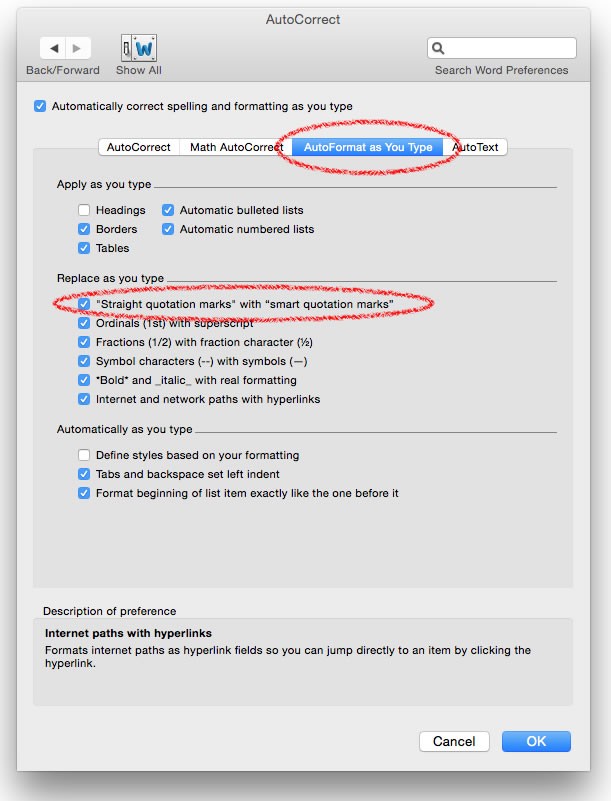
Book Design Basics: Changing Dumb Quotes Into Smart Quotes
If you wrote your manuscript with smart quotation marks turned off, you may end up with straight quotes and apostrophes all through your book. This is easy to fix. Make sure “smart quotes” are turned on. Then perform two find and replace operations: Search for apostrophes/single quotes and replace them with the same. Then search for double quotes and replace them with double quotes. As the “replace” function “retypes” your characters, the “smart” quotation marks will be substituted for the straight ones.
More Book Design Basics:
Book Design Basics Part 1: Margins and LeadingBook Design Basics Part 2: Optical Margins, Indents and Periods
Book Design Basics Part 3: Running The Numbers
Book Design Basics - Dashes, Hyphens and Dots
Book Design Basics: Small Capitals – Avoiding Capital Offenses
Book Design Basics - Drop Caps and Initial Impressions
Article: Writing is Design: The Grammar of Book Design
Book Design Basics - Use Hyphens for Justified Type
Article: Fine Control Over Justified Text
Simulating the Appearance of Traditional Print
Page Layout: Illustrated Books and the Rule of Thirds
Book Cover Design: Moving from Screen to Printing Press
Book Design Basics: Quotation Marks and Primes
Book Design Basics: Choosing a Book Font



